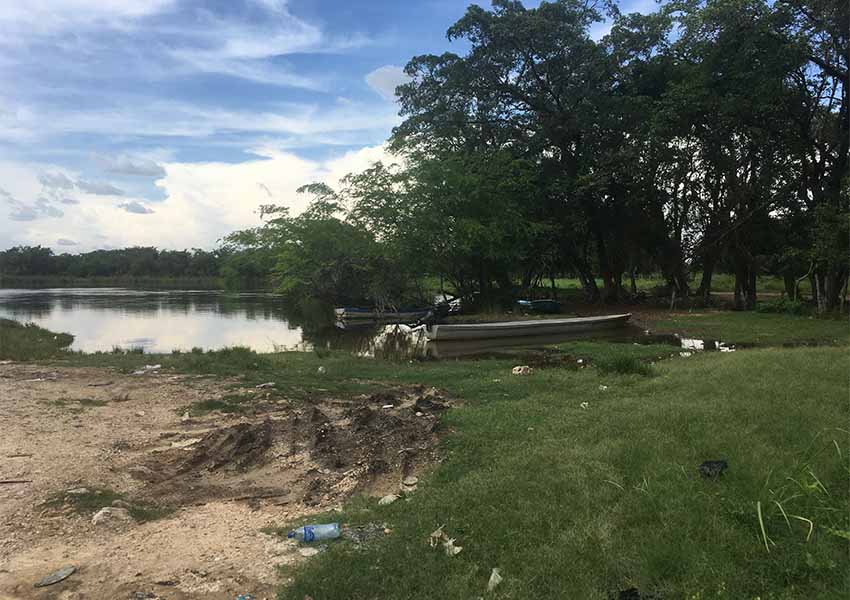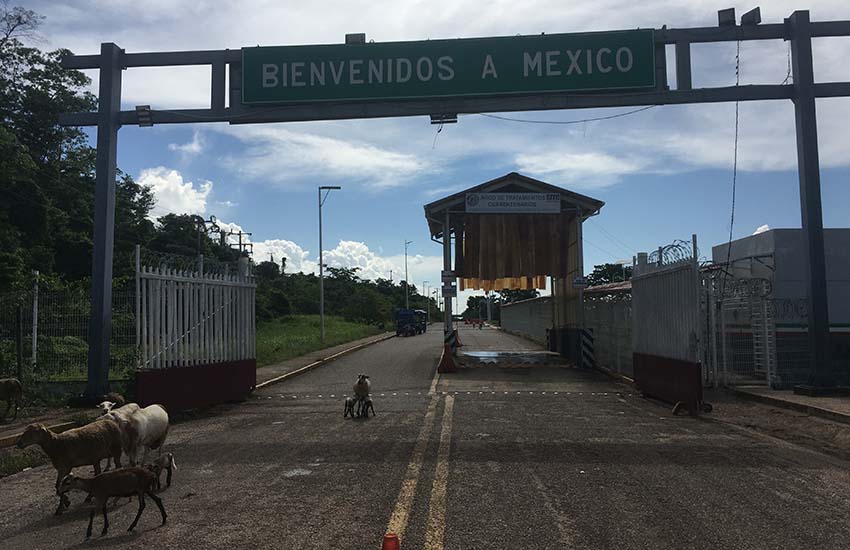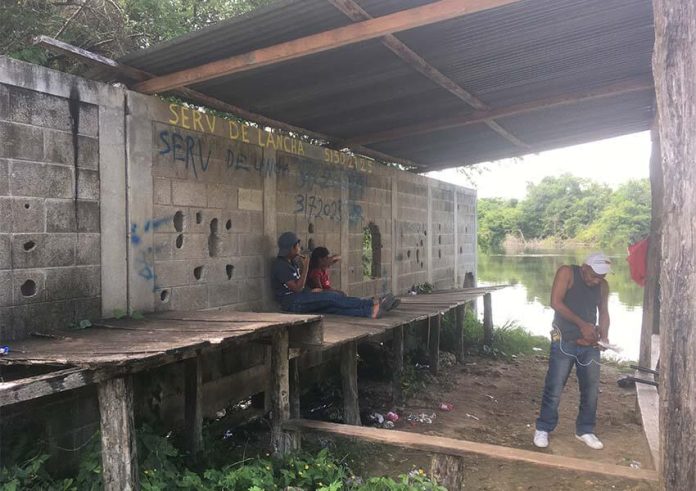As Tapachula, Chiapas, has become notorious as a place where migrants coming from Central America can be trapped in Mexico for months or even years in detention — or simply living on the streets waiting for paperwork with no way to legally earn income — a small Tabasco town on Mexico’s southern border with Guatemala has become an increasingly popular route for migrant crossings and human trafficking.
El Ceibo, located in the Tenosique municipality, lies within Mesoamerica’s largest swampland, the Pantanos de Centla Biosphere Reserve, which is fed by overflow from the Grijalva and Usumacinta rivers. The endless canals created by the wetlands in El Ceibo provide waterways that lead to the town of La Palma, where migrants can surreptitiously take a direct road to Mexico City and further north.
One of these canals in El Ceibo, just footsteps from the border, has become the latest highway for coyotes smuggling people into Mexico. For those who can afford it, the average asking price of US $4,500 guarantees three shots at entry into Mexico — assuming that they survive the jungle and then the desert they’ll encounter.
The thick jungle and winding rivers of the Centla Reserve provide perfect cover for migrants but also for narcos smuggling drugs between Mexico and Guatemala, who often view the refugees they encounter as easy targets of opportunity for extortion.

Despite large numbers of Mexican troops shifting their position to the southern border in the last year, Tenosique, Tabasco, has witnessed record-breaking numbers of irregular migration as Mexican migrant policy has pushed undocumented hopefuls into Tapachula, where today’s migrants know they face an uncertain future they’re powerless to change.
According to Mexico’s Migration Policy Unit (UPMRIP), over 40,000 applications for asylum were registered in Tabasco in 2021, but numbers continue to rise and it is estimated many more remain undocumented. Human rights organizations such as Doctors Without Borders (MSF) working in the area also claim to have collected testimonies of migrants who have suffered abductions, torture and sexual assault.
Hopeful migrants in El Ceibo make the journey to Mexico by crossing the San Pedro river, which runs westward through Guatemala until it enters Mexico via Tabasco. It runs through both countries in a maze of canals.
While some migrants started their journey in Guatemala, many others are coming from other Central American countries, like one young man from Nicaragua in his late twenties who asked not to be named, who managed to evade detection from multiple police and military checks during a four-hour bus journey.
As he boarded the bus, he spoke briefly with the driver and his assistant before taking a seat at the back, remaining silent the entire time. Only two other passengers were on the bus with him.
At each of the four military checkpoints the bus encountered as it approached the Mexican border, Guatemalan soldiers charged with the inspection of vehicles spoke with the bus driver. Passengers were never required to submit documentation — the bus was always waved on.
The young man surely saw the large sign as they got closer to the border, indicating where irregular migrants should go to process asylum applications with Mexico before arriving at the final checkpoint. However, less than a kilometer from the border, the bus swerved from the road and headed instead toward the San Pedro river, this Nicaraguan’s final stop in Guatemala and possibly his first step into Mexico.
As the bus stopped and the driver and his assistant exited, they signaled for the young man to follow them to a small hut, where two children were also waiting. The driver then handed the young man a passport and a set of papers before asking him to stand straight as he took a picture of him with his cell phone.

The bus then left him and proceeded toward the frontier with Mexico with one passenger less.
He joined one of many hopefuls taking small, leaky boats that rest on low marshland converted into makeshift docks waiting to carry nervous men, women and children hoping for a better life in Mexico or the United States.
It was a potentially dangerous journey: the river is home to Morelet’s crocodiles and boas, while the jungle that provides protection from capture also contains jaguars and other predators. As for human dangers, large numbers of troops hunt migrants on both sides of the border, scanning the land, air and waterways.
Migrants who take this uncharted but increasingly popular route face dangers from cartels, unscrupulous coyotes and other bad actors who simply want to prey on people they know will pass through and feel unable to seek help from authorities.
MSF has collected several testimonies from migrants that reveal sometimes horrific instances of extortion and abuse they suffered upon entering Mexico that required medical and psychological care. “What we are seeing is an exponential growth in the number of kidnappings in this area and an increase in the cruelty and the torture methods used by criminal groups,” said Gemma Pomares, the organization’s head of medical activities in Tenosique.
MSF has documented stories from migrants who were taken to abandoned houses and forced to remove their clothes before being tied up for hours. Left out in the open in high temperatures and inclement weather, their freedom was granted in exchange for providing the phone numbers of their relatives.
“While violence has always been a reality of the migration route north from Guatemala through Mexico, extortion and this level of extreme violence have been more pervasive in dangerous cities closer to the U.S. border and has not been so prevalent, until now, in southern areas,” said Pomares.
MSF says that in order to contain migratory flows to the United States, Mexico’s immigration policies have criminalized, persecuted and detained migrants, forcing them to go underground and take increasingly dangerous routes.
“It was a just matter of time before the high levels of violence against migrants and refugees that our teams have seen on the northern border moved to the south of the country,” said Sergio Martín, MSF’s general coordinator in Mexico.
“What we are seeing are the humanitarian consequences of the tightening of migration policies, designed to inflict greater suffering on the thousands of people desperately escaping for their lives. The lack of protection and the cruelty with which they are being treated is unacceptable.”
Mark Viales writes for Mexico News Daily.
